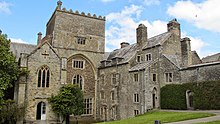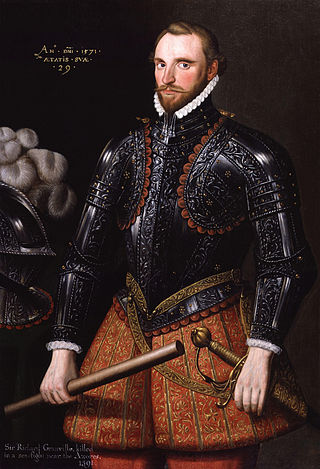
Sir Richard Grenville, also spelt Greynvile, Greeneville, and Greenfield, was an English privateer and explorer. Grenville was lord of the manors of Stowe, Cornwall and Bideford, Devon. He subsequently participated in the plantations of Ireland specifically the Munster plantations, the English colonisation of the Americas and the repulse of the Spanish Armada.

Netley Abbey is a ruined late medieval monastery in the village of Netley near Southampton in Hampshire, England. The abbey was founded in 1239 as a house for monks of the austere Cistercian order. Despite royal patronage, Netley was never rich, produced no influential scholars nor churchmen, and its nearly 300-year history was quiet. The monks were best known to their neighbours for the generous hospitality they offered to travellers on land and sea.
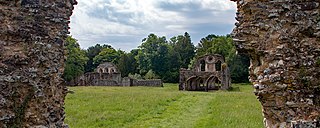
Waverley Abbey was the first Cistercian abbey in England, founded in 1128 by William Giffard, the Bishop of Winchester.
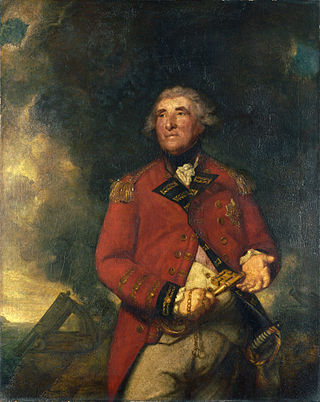
General George Augustus Eliott, 1st Baron Heathfield, was a Scottish officer of the British Army, who served in three major wars during the 18th century. He rose to distinction during the Seven Years' War when he fought in Germany and participated in the British attacks on Belle Île (France) and Cuba. Eliott is most notable for his command of the Gibraltar garrison during the Great Siege of Gibraltar, which lasted from 1779 to 1783, during the American War of Independence. He was celebrated for his successful defence of the fortress and decisive defeat of Spanish and French attackers.

Bordesley Abbey was a 12th-century Cistercian abbey near the town of Redditch, in Worcestershire, England.

Zeal Monachorum is a village and civil parish in the Mid Devon district of Devon, England, about 18 miles (29 km) north-west of Exeter, situated on the River Yeo. According to the 2001 census, it had a population of 398. The village is in the electoral ward of Taw whose population at the 2011 Census was 1,660.

Quarr Abbey is a monastery between the villages of Binstead and Fishbourne on the Isle of Wight in southern England. The name is pronounced as "Kwor". It belongs to the Catholic Order of St Benedict.

Great Coxwell Barn is a Medieval tithe barn at Great Coxwell, Oxfordshire, England. It is on the northern edge of the village of Great Coxwell, which is about 9 miles (14 km) northeast of Swindon in neighbouring Wiltshire.

Meavy is a small village, civil parish and former manor in the English county of Devon. Meavy forms part of the district of West Devon. It lies a mile or so east of Yelverton. The River Meavy runs near the village. For administrative purposes the parish is grouped with the parishes of Sheepstor and Walkhampton to form Burrator Parish Council, and for electoral purposes it is grouped with the same two parishes to form Burrator Ward.

Coggeshall Abbey, situated south of the town of Coggeshall in Essex, was founded in 1140 by King Stephen of England and Matilda of Boulogne, as a Savigniac house but became Cistercian in 1147 upon the absorption of the order.

There have been four baronetcies created for people with the surname Drake, three in the Baronetage of England and one in the Baronetage of Great Britain.

Sir Henry Pollexfen of Nutwell in the parish of Woodbury, Devon, was Lord Chief Justice of the Common Pleas.

Forde Abbey is a privately owned former Cistercian monastery in Dorset, England, with a postal address in Chard, Somerset. The house and gardens are run as a tourist attraction while the 1,600-acre (650 ha) estate is farmed to provide additional revenue. Forde Abbey is a Grade I listed building.
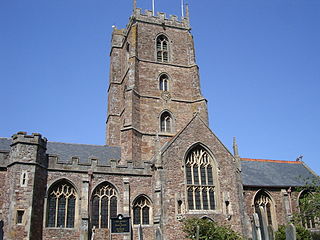
Dunster Priory was established as a Benedictine monastery around 1100 in Dunster, Somerset, England.

Sawtry Abbey was a Cistercian abbey located between Sawtry and Woodwalton in Cambridgeshire, England. The abbey was founded in 1147 by Simon II de Senlis, Earl of Northampton, who was the grandson of Earl Waltheof and Judith, the niece of William the Conqueror who held the manor when the Domesday Survey was compiled. It is the only Cistercian abbey in the county.

Sir Francis Drake, 3rd Baronet (1642–1718), of Buckland Abbey in the parish of Buckland Monachorum and of Meavy, both in Devon, England, was elected seven times as a Member of Parliament for Tavistock in Devon, in 1673, 1679, 1681, 1689, 1690, 1696 and 1698.
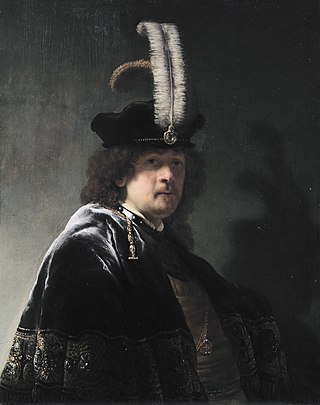
Self-portrait wearing a white feathered bonnet is an oil painting attributed to the Dutch painter Rembrandt. It is signed and dated 1635. It was traditionally regarded as a Rembrandt self-portrait until 1968, when it was rejected on stylistic grounds in the Rembrandt catalogue raisonné by Horst Gerson. In 2013, art historian Ernst van de Wetering re-attributed the painting as an original Rembrandt. It is one of over 40 painted self-portraits by Rembrandt.

Ash in the parish of Musbury in the county of Devon is an historic estate, long the residence of the ancient Drake family, the heir of which remarkably was always called John, only one excepted, for ten generations. It was formerly believed to have been the birthplace of John Churchill, 1st Duke of Marlborough (1650–1722), whose mother was Elizabeth Drake, but was in fact probably in ruins at the time of his birth. The future Duke was however baptised in 1650 in the Chapel at Ash, which had been licensed by the Bishop of Exeter in 1387. Ash was "burnt and demolished" during the Civil War and "lay long in ruins" during which time the family moved one mile away to Trill, Axminster. John Drake (1625–1669), the wartime occupant who had suffered so greatly for the Royalist cause received some recompense at the end of the troubles by being created a baronet by King Charles II on the Restoration of the Monarchy in 1660. Ash was rebuilt "to a greater perfection than it was of before" by Sir John Drake, 2nd Baronet (1647–1684). The last in the male line was Sir William Drake, 6th Baronet, who died without children and bequeathed all his estates to his widow Anne Williams, who remarried to George Speke, MP, and had by him a daughter Anne Speke, who brought the Drake estates, including Ash and the advowson of Musbury, to her husband Frederick North, 2nd Earl of Guilford (1732–1792), who sold them piece-meal to various persons. Ash House survives today as a grade II* listed private residence in much the same form as depicted by Swete in 1795.
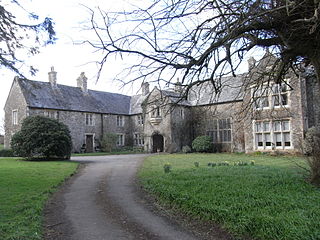
Orleigh is a historic manor in the parish of Buckland Brewer, situated 4 miles to the south west of Bideford, North Devon, England. The manor house is known as Orleigh Court.

Sherford is a village and former civil parish and manor, now in the parish of Frogmore and Sherford, in the South Hams district, in the county of Devon, England. It is situated about 2+1⁄2 miles (4 km) east of the town of Kingsbridge. It should not be confused with the new town Sherford to be built on the outskirts of Plymouth, about 18 miles (29 km) to the north-west. The parish church is dedicated to Saint Martin of Tours. In 1961 the parish had a population of 258. On 1 April 1986 the parish was abolished and merged with parts of South Pool and Charleton to form "Frogmore and Sherford". Sherford was recorded in the Domesday Book as Sireford/Sirefort/Sireforda.
